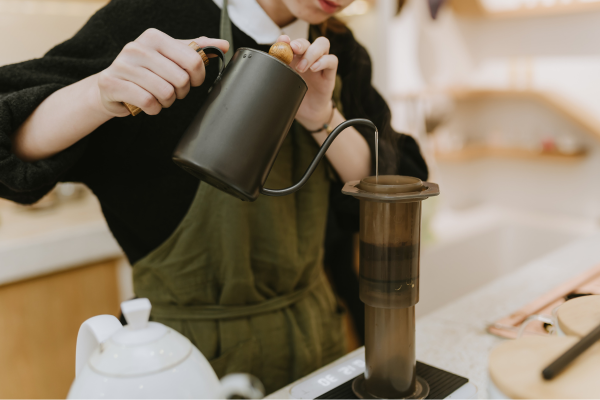Coffee Processes: Steps
Coffee Processes – Delving into the intricate world of coffee, we unravel the journey from bean to cup, shedding light on the meticulous processes that shape each sip of this beloved beverage. From the sun-kissed fields where coffee cherries are handpicked to the artisanal roasting techniques that unlock their full flavor potential, every step plays a crucial role in crafting the perfect brew.
Embark on a sensory adventure as we navigate through the harvesting, processing, and roasting phases, uncovering the secrets behind each stage and how they contribute to the rich tapestry of flavors and aromas found in your morning cup. With insights and expert tips at your fingertips, you’ll gain a newfound appreciation for the craftsmanship and dedication woven into every batch of coffee.
Join us as we demystify the coffee-making process, empowering you to elevate your home brewing experience and savor the nuances of each bean variety and roast profile. Whether you’re a novice coffee enthusiast or a seasoned aficionado, there’s always more to learn and discover on this aromatic journey through the coffee processes.
Coffee Processes: Grain Harvest
Harvesting is the crucial first step in the coffee process. There are two main harvesting methods: selective harvesting and mechanical harvesting. In selective harvesting, the beans are harvested by hand, selecting only the ripe ones, guaranteeing superior quality. In mechanical harvesting, machines are used to harvest the grains, which is faster, but can result in a mixture of green and mature grains. For a high-quality cup of coffee, choose selectively harvested coffees.
Coffee Processes: Grain processing
After harvesting, the grains undergo a beneficiation process to remove the pulp and skin. There are different processing methods including wet method, dry method and semi-wet method. Each method gives different characteristics to the beans and, consequently, to the flavor of the coffee. Try different processed coffees to discover your personal preferences.
Coffee Processes: Grain roasting
The roasting of coffee beans is a crucial moment that directly affects the taste, aroma and intensity of the drink. During the roasting process, the beans undergo a chemical transformation, developing complex flavors. Different roast levels, from light roast to dark roast, result in varying flavor profiles. Try different roasts and find out which ones please your taste the most.
Coffee Processes: Grain storage
After roasting, it is important to store coffee beans correctly to preserve their freshness and quality. Store them in airtight containers in a cool, dry place, away from light. Avoid buying large quantities at once, as coffee loses freshness over time. Buy in small quantities and consume within a reasonable time to get the most out of its flavors and aromas.
Coffee Processes: Grain Grinding
Grinding the coffee beans is a crucial factor in extracting the maximum flavor from the beverage. Grinding granulometry varies according to the preparation method chosen. Finer grinds are suitable for slow brewing methods such as the French press, while coarser grinds are ideal for faster brewing methods such as the espresso machine. Grind the beans just before brewing to preserve freshness and essential oils.
Coffee Processes: Choice of preparation method
There are several coffee preparation methods available, each with its own particularities and flavor characteristics. Try methods like the French press, filter paper, espresso, pour-over, aeropress, and Italian coffee maker. Each method offers a unique sensory experience. The choice of brewing method can affect the strength, body and flavor notes of the coffee. Explore different methods and find out which one best suits your preferences.
Coffee Processes: Proportion between coffee and water
The ratio of coffee to water is a key aspect of getting the perfect cup of coffee. The ideal proportion may vary according to the preparation method and individual preferences. As a starting point, a common ratio is about 1:16 (one part coffee to 16 parts water), but you can adjust this ratio to suit your personal taste. Experiment and find the ratio that gives you your desired flavor balance.
Coffee Processes: Water temperature control
Water temperature also plays a key role in the coffee extraction process. Most cooking methods recommend a temperature range between 90°C and 96°C. Water that is too hot can result in bitter coffee, while water that is too cold can under-extract the coffee, resulting in a weak flavor. Use a thermometer to control the water temperature and ensure proper extraction.
Coffee Processes: Extraction time
The extraction time is the period in which the water is in contact with the coffee, dissolving its compounds and extracting the desired flavors. The extraction time may vary according to the preparation method and your personal preferences. Follow the specific recommendations for each method and make adjustments according to your taste. Watch the extraction time with a stopwatch to ensure consistency.
Coffee Processes: Tasting and appreciation
The last stage of the coffee process is the tasting and appreciation of the prepared cup. Take a moment to observe the aroma, savor the different flavor profiles, appreciate the texture, and reflect on the experience. Develop your palate and try to identify the flavor notes present in the coffee. Share your impressions and enjoy the pleasure of a good cup of coffee. ara de café can provide.
Coffee Processes: Know the origin of the grains
One way to get even more out of the coffee process is to know the origin of the beans you are using. Each producing region has its unique characteristics, such as climate, soil and altitude, which influence the flavor profile of the beans. Research the different origins of coffee, such as Brazil, Colombia, Ethiopia, Costa Rica, among others, and find out which flavors and aromas are typical of each region. Try coffees from different origins and enjoy the diversity that the world of coffee has to offer.
Coffee Processes: Explore different types of roasting
In addition to the different levels of roasting, there are also different types of roasting that can add even more complexity to your coffee. Medium roasting, for example, can bring out chocolate and caramel notes, while dark roasting can add more intense, toasty notes. Experiment with different types of roasting and discover how they can influence the taste and aroma of your coffee.
Coffee Processes: Practice latte art techniques
If you’re a fan of lattes like cappuccinos and lattes, exploring latte art techniques can be a way to enjoy the café aesthetic. Learn how to properly steam milk to get a creamy texture, and try simple designs like hearts or leaves to decorate the surface of the coffee. In addition to providing an enjoyable visual experience, latte art can also be a way to express your creativity and impress your guests.
Coffee Processes: Try it with additional ingredients
A fun way to further customize your coffee is to experiment with additional ingredients. Add a dash of cinnamon, a spoonful of cocoa powder, a touch of vanilla extract or even a spoonful of whipped cream to spice up your cup of coffee. Keep in mind that these additional ingredients can change the coffee’s flavor, so adjust the amounts according to your preferences.
Coffee Processes: Share the pleasure of coffee with others
Coffee is a beverage that can be enjoyed in company. Share the coffee pleasure with friends, family or co-workers. Organize tasting meetings, where everyone can bring a different variety of coffee. Share your experiences, favorite flavors and discoveries with others. The exchange of knowledge and passion for coffee can create moments of connection and joint learning.
Coffee Processes: Conclusion:
From picking to cup, every step of the coffee process presents opportunities to explore, experiment and enjoy. By knowing the steps of the process, you will be able to improve your brewing technique, discover new flavors, explore different origins of beans and share the pleasure of coffee with others. Enjoy every moment and remember that coffee is an ongoing journey of discovery. Awaken your senses, get creative and enjoy a cup of coffee that represents all the care and work that went into the process.
See More: https://amoartesanato.com/





